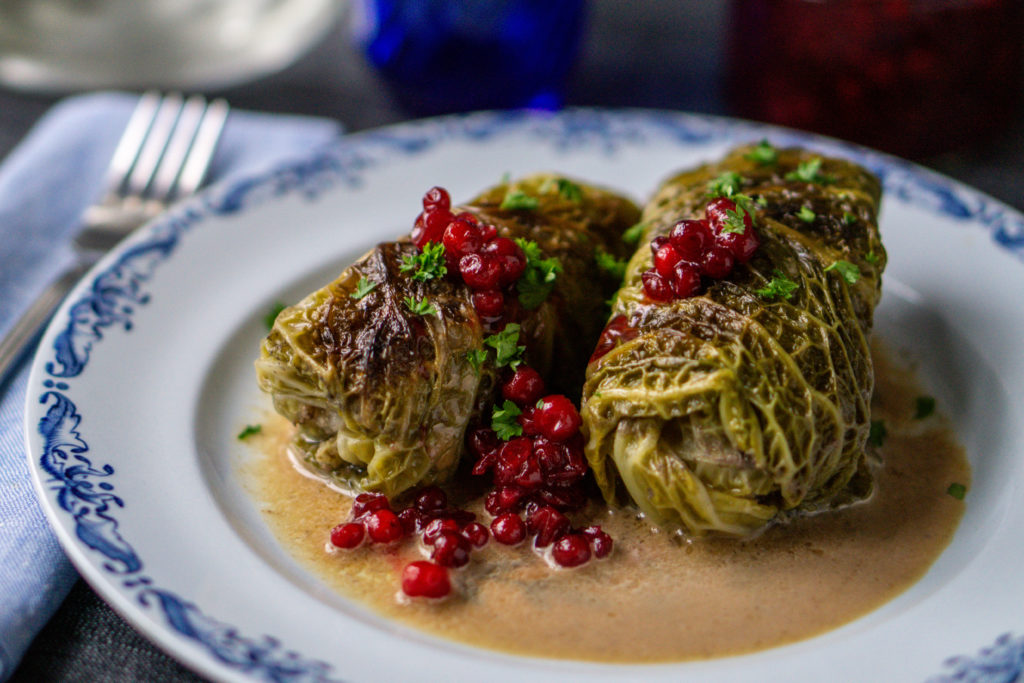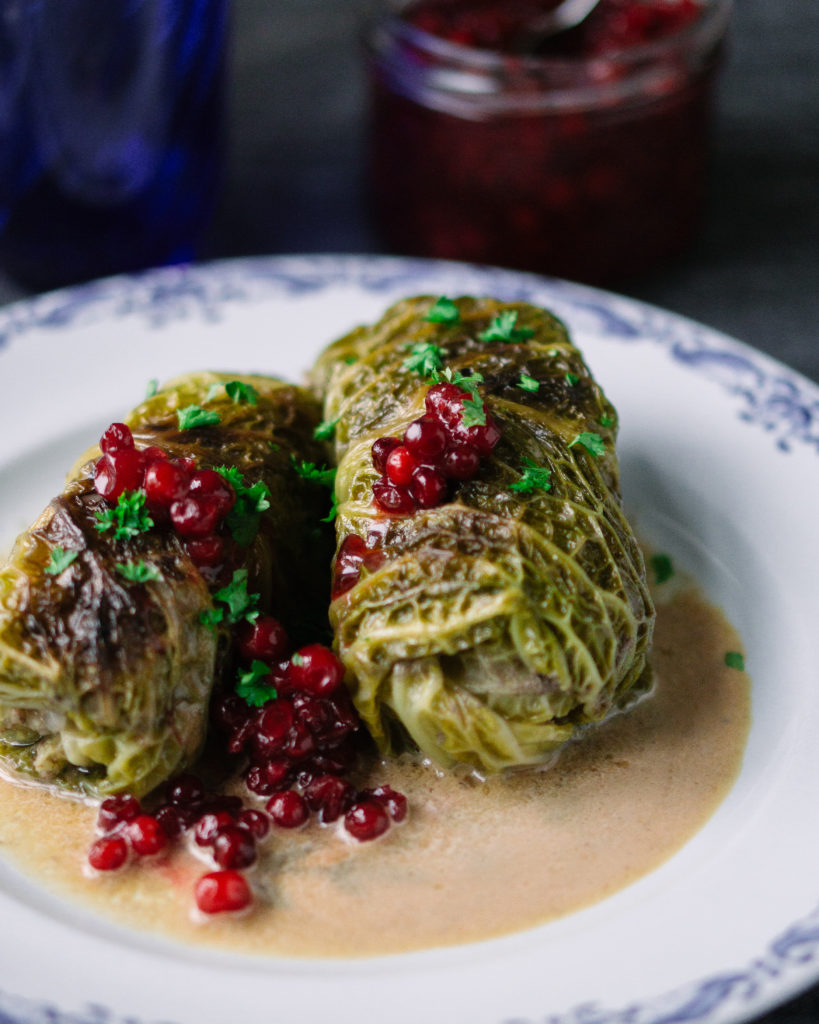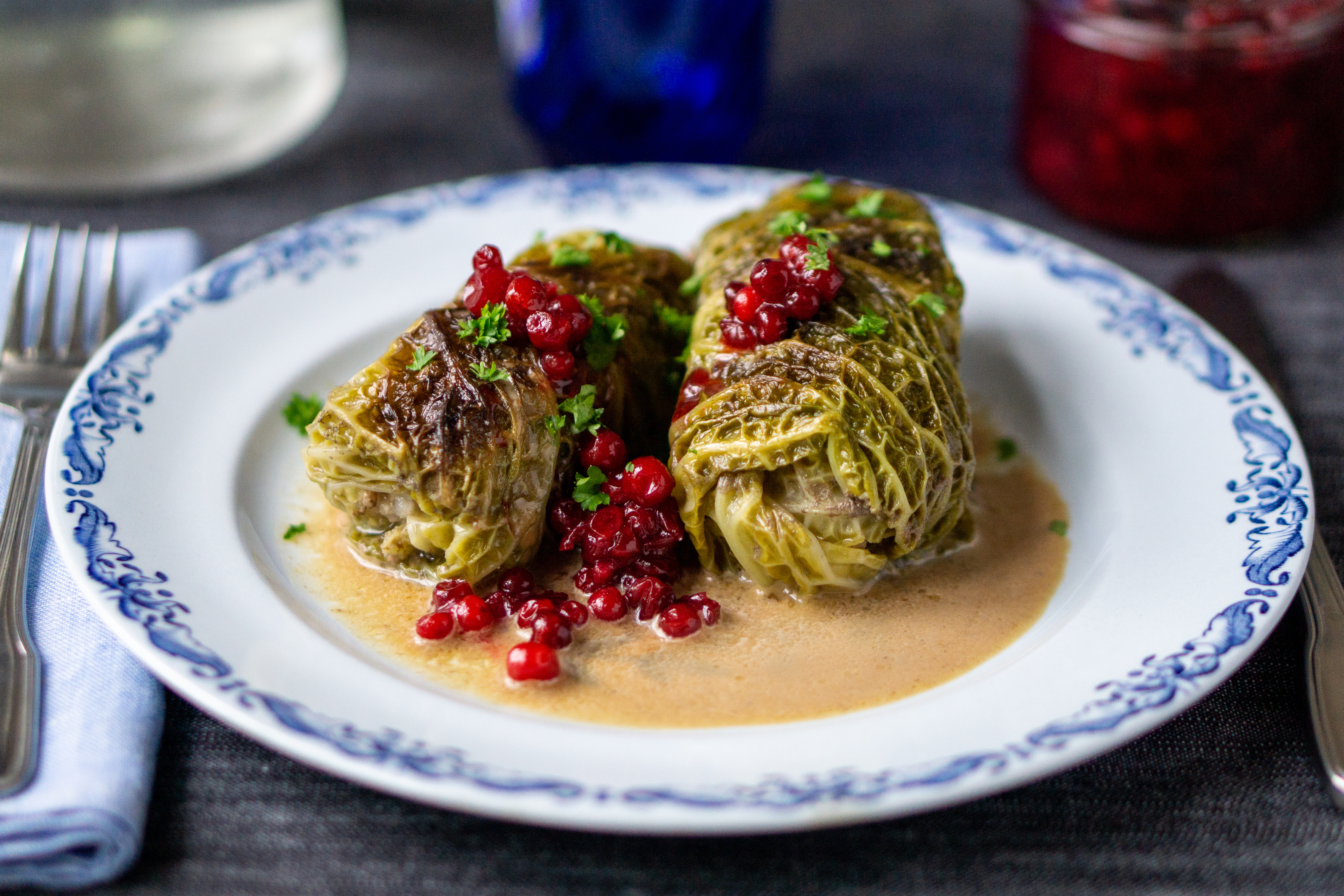In Sweden, an array of baked goods and dishes have their own “theme days”. The most famous is, of course, cinnamon bun day on October 4th, but there are also mud cake day, vacuum cleaner day (the treat, not the cleaning equipment!), and sandwich cake day.
It is easy to sigh at the thought of an endless stream of theme days, but it is a bit more difficult to be against kåldolmens dag, or cabbage roll day. Ever since 2010, it is celebrated on November 30th, the day of the death of king Karl XII in 1718. In the past, this day has been “celebrated” by neo-nazis and racists. The humble cabbage roll serves as a reminder that the cultural exchange with the rest of the world is an important part of the Swedish tradition and culture. The link between the cabbage dish and the king is the king’s stay in the Ottoman empire at the beginning of the 18th century, which probably lead to the dish coming to Sweden.
But before we look at how kåldolmar, or cabbage rolls, have become a part of Swedish culture, we can see how quickly they can be done in stop motion:
The time before dolma
Stuffing vegetables wasn’t a new event when dolma came to Sweden. The first relevant example I can find is from En gammal svensk kokbok, originally published in 1650. The book has a number of cabba recipes, but most of them are bread-based stuffings meant for a whole, hollowed cabbage head.
In Een liten Hand-book from 1695, the author recommends that you stuff head lettuce with frikadeller of oxe or calf, as well as yolks, bind it, and let them simmer in water. In 1751, Maria Elzberg stuffs an entire head of cabbage with a spiced mix of bread, corints, and milk, before letting the entire cabbage head boil gently for three hours. Cajsa Warg has a recipe for lettuce filled with minced meat.
So, stuffed cabbage wasn’t news. But what does it look like when the cabbage roll makes its entrance?

The dolma’s arrival in Sweden
According to SAOB, The Swedish Academy’s Dictionary, the word dolma is seen for the first time in the Swedish language in Cajsa Warg’s cookbook from 1765, while Jan-Öjvind Swahn in Mathistorisk Uppslagsbok claims that it is part of a supplement in a 1756 edition. Unfortunately, I haven’t been able to access these two editions. Dolma is not in the first edition from 1755, but in the fifth edition from 1770, dolma is one of the recipes in a supplement to the cookbook.
Analyzing Warg’s dolma-recipe from 1770 makes it clear that it is markedly different from the earlier recipes referred to above. The meat in her dolma is mixed with rice. The mix is stuffed in vine leaves. But—most importantly—single-serving portions. In this recipe, you no longer fill an entire cabbage head in a semi-barbarous way, but “fold the leaf around the meat, and form it, round, like a ball”. When the dolma has cooked, the dish is served with pressed lemon juice on top.
As we can see above, there are several strong resemblances between the dish with the same name from the area around present-day Turkey. And, furthermore—the name. The step from dolma to “Swedish” cabbage rolls, kåldolmar, is also evident—Warg specifies that those who can’t access vine leaves can use cabbage leaves instead.
But the question is if Warg doesn’t feature a predecessor to the cabbage roll already in 1755? In the first edition, we find Roullade af Kål, where cabbage leaves are stuffed with a mix of chopped cabbage, suet, grated bread, and egg. The rolls are bound with a string and are left to boil gently. This is served with a sauce of stock, yolk, and cream.
When it comes to the Ottoman influences, we can ascertain that it most likely is Karl XII’s adventure’s in present-day Moldova that left a trace in one way or another. Swahn considers it likely that it is the creditor’s stay in Sweden in 1716-1732 while they were claiming their money that left a mark. Hopefully, we’ll one day find further sources.
Kåldolmar—what do they contain?
The main ingredients in most recipes are cabbage (of course), minced meat, and rice. Traditionally, white cabbage seems to be the most common, although Leif Mannerström suggests also using other cabbage types such as savoy cabbage.
We can, of course, make a deep study in exactly how the mix of minced meat is made—with or without onion, with allspice or regular pepper—but it is mainly a personal preference. When it comes to the minced meat, Per Morberg uses equal parts beef (or calf) and pork, while Mannerström and Magnus Nilsson suggest mixed minced meat, where the proportions between beef and pork can vary.
All the recipes I’ve seen adds rice to the meat, apart from Mannerström’s. He prefers to use boiled potato instead, as he considers it better for the stuffing’s consistency. He also adds some boiled, chopped cabbage into the stuffing.
Once the cabbage rolls have been stuffed, it is time to cook them. Magnus Nilsson, Mannerström and Per Morberg seem to mainly cook theirs in the oven. Jenny Åkerström in Prinsessornas kokbok is a bit more elaborate and binds every kåldolme with a kitchen string, fries them, and then let them simmer in stock, still on the stove. While Per Morberg and Magnus Nilsson trickle some golden syrup on top of the cabbage rolls, Mannerström brushes his with butter and sprinkle some brown sugar on top.

How to make taste kåldolmar, or Swedish cabbage rolls
This is simply a minced meat-recipe with added rice—plenty of room for own preferences. For four people:
1 cabbage head—white or savoy
300 gr (10 oz) minced meat—preferably a mix of beef and pork
0,5 yellow onion
2,5 dl (1 cup) boiled rice
1,5 tsp salt
A good pinch of black pepper
Possibly 1 dl milk
Frying: butter or oil
Oven: water or stock
Sauce: concentrated meat stock, cream or milk, potato starch or corn starch, soy sauce, pepper
Serving: boiled potato, lingonberry jam, sauce
- Boil water in a large pot and add the cabbage head. Boil until it is soft. Dip the cabbage in cold water and let it cool slightly before you cut off the leaves, one at a time. Place the leaves in a colander or on a clean kitchen towel so they can drain.
- Chop the onion finely. Also chop 2-3 of the smaller, inner leaves that you won’t use for stuffing. Add the onion and cabbage chop in a large bowl.
- Place minced meat, boiled rice, salt, and pepper in the same bowl. Stir until it is well blended. Add some milk, a little at a time, if you want a looser mix.
- To make a cabbage roll, take a cabbage leaf and cut off a v of the thick stalk. Add a spoonful of stuffing, fold the sides over it, and roll it up. Repeat this process with new leaves until you run out of filling.
- Turn the oven on 200°C (390°F).
- Add a little butter or oil to a saucepan and fry the cabbage rolls until they get some color. Then, place them with the seam down in a greased oven-proof pan. Add water or stock to cover the cabbage rolls at least half-way. Bake in the oven for about 35-40 minutes.
- If you want, you can skip the frying and let them get some color in the oven. If so, you can brush them with some butter or trickle over some golden syrup, and let them be in the oven for a bit longer.
- Once the cabbage rolls are done, use the stock from the cooking to make a sauce by flavoring it with concentrated meat stock, soy sauce, and pepper, some milk and cream, and thickening it with potato starch or corn starch mixed with a bit of water.
- Serve with boiled potatoes, sauce, and, if you have, lingonberry jam.
Suggestions
I prefer to fry my cabbage rolls on the stove until they have some color, but that is, of course, an extra step that results in more dishes and work, so feel free to skip it.
Also, I tend to eat the cabbage rolls without potatoes, as they are pretty filling as they are. Speaking of personal preferences, I’ve finally accepted that I turn to savoy cabbage for this dish partly for the aesthetics…



Our family recipe of cabbage rolls includes beef, pork, garlic, sage, uncooked rice,salt, pepper and sauerkraut. To cook you layer rolls with sauerkraut between in large pot, cover with water and weight down with a plate and jar full of water. Bring to boil then simmer for 3hrs, remove weight and cook for another 3hrs.
Carol, I’m a big fan of sauerkraut but haven’t tested that yet! Maybe for next time… Thank you for sharing your family’s way of cooking it!
I have a recipe a gourmet chef shared with me that involves lamb, and replaces the rice with oatmeal. It also uses cardamon, coriander, and ginger for the spices. These are covered with a cabbage-flavored gravy and baked. They are quite delicious, but I’ve never seen this recipe elsewhere.
William, for some reason your comment ended up in the spam so I only saw it now — apologies! It sounds like you have a delicious recipe. There are so many great versions of this dish, varying between different countries and cultures, so it is always interesting to hear how others cook it!
wooow
this look delicious
Thank you, hope you’ll like it!
This brings back good memories from the olden days on Christmas day. My Grandparents immigrated from Sweden and brought these traditional recipes with them. They are long gone, and l am now the old-timer trying to keep traditions alive. Thank you for helping others to create their own memories.
I love that you’re still keeping the tradition going and still having your grandparents present in your life in that way. Thank you for your comment, it moved me.
The Christian community in Levant have a vegan version of stuffed cabbage leaves. The stuffing replaces meat with chopped almonds/pine nuts and sultanas it’s a dish prepared during Lent.
Thank you for the comment, Kyle. Chopped nuts and sultanas sound like a delicious addition.